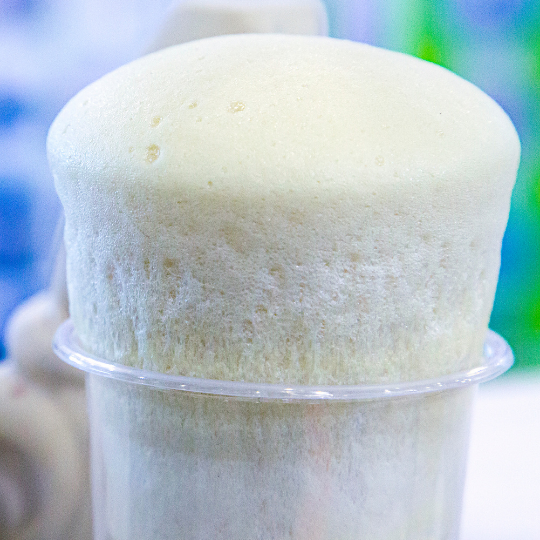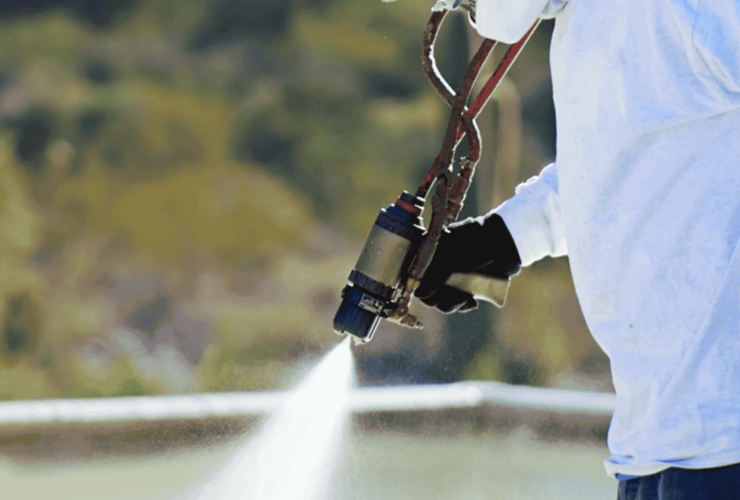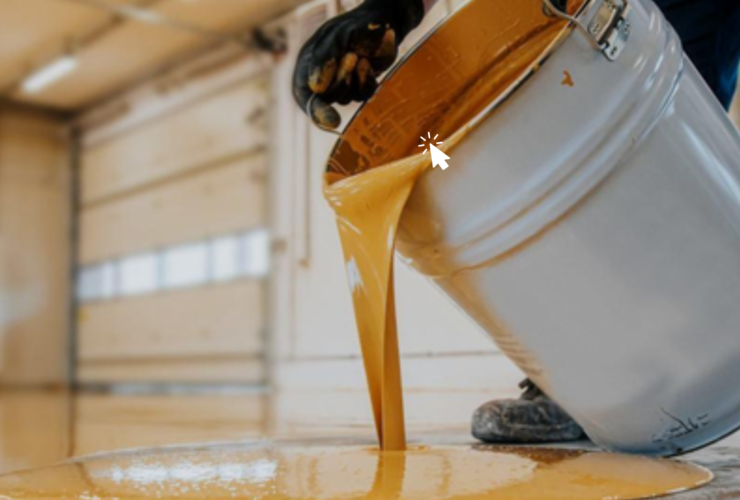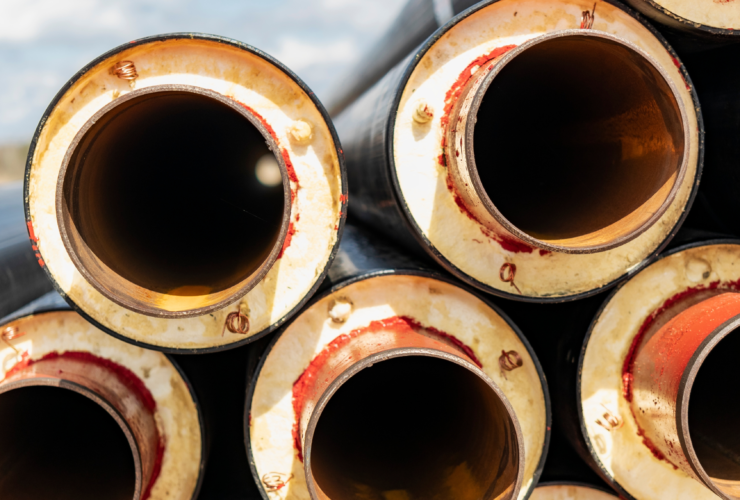Decades of materials research and technological advances have played an important role in humanity’s journey to discover more durable and functional materials. The continuous development of materials science has been a cornerstone of technology and innovation since the dawn of mankind. This process entered a new era in the mid-20th century with the discovery of polymers such as polyurethane. In this quest, innovative materials such as flexible polyurethane foam stand out with their versatile uses and superior performance characteristics. First developed in the mid-20th century, flexible polyurethane foam is now used in many different fields, from furniture to the automotive industry, from the mattress industry to insulation materials.
Chemical Structure and Production Stages of Flexible Polyurethane Foam

Flexible polyurethane foam has a very interesting and complex production process in terms of chemical structure. The production of this foam starts with a reactive mixture of two main components, polyol and isocyanate. This part of the production process is the most critical phase that directly affects the physical properties of the foam. As a result of the reaction, the foam solidifies, filling the volume and is ready for use. Each step of this process has a major impact on the quality of the end product, which is why production techniques are constantly being developed and optimized. Understanding this manufacturing process of flexible polyurethane foam is critical to further develop the material and adapt it to new application areas.
Physical and Mechanical Properties

The physical and mechanical properties of flexible polyurethane foam make it ideal for many applications. These foams are particularly well known for properties such as low density and high resilience, making them perfect for cushion material and other soft textured products. Their free rise density usually ranges from 15 to 70 grams per cubic centimeter, and this property determines the level of softness and resistance to pressure of the foam. In terms of mechanical properties, the tensile strength, impact resistance and elongation capacity of flexible polyurethane foam can be optimized according to the areas of use. The foam shows excellent “memory” under load, i.e. it has the capacity to return to its original shape even when deformed. This is particularly desirable in furniture and automotive applications because it retains its shape and provides comfort even in long-term use. Furthermore, the foam’s properties such as air and water vapor permeability make it possible to use it as an insulating material, making it an ideal choice for both sound and thermal insulation. These various physical and mechanical properties of flexible polyurethane foam make it indispensable in industrial applications as well as in everyday use.
Diverse Usage Areas of Flexible Polyurethane Foam
Flexible polyurethane foam has been one of the most innovative developments in materials science in recent years. With its light weight, superior adaptability and diverse applications, flexible foam has a wide range of applications from industry to daily life practices. The properties of flexible polyurethane foam, such as durability and flexibility, have made it indispensable in various sectors, paving the way for new product designs and applications. These foams are preferred in many different fields from furniture production to the automotive industry, from insulation materials to health products.
 1. Furniture Industry
1. Furniture Industry
Flexible polyurethane foam is the main filling material used in the furniture industry, especially in parts such as armchairs, sofas and beds. Offering high comfort and long life, flexible foam is an ideal choice thanks to its capacity to maintain its form and its ability to distribute pressure evenly. In addition, the air permeability of the foam increases the breathability of the products, offering healthier use.
2. Automotive Industry
In the automotive industry, flexible polyurethane foam is a critical component in the interior design of vehicles. This foam is especially used in the production of parts such as seat cushions, head restraints and door interior panels. In addition to providing comfort and safety inside the vehicle, flexible polyurethane foam offers an extra layer of safety for passengers with its energy absorption properties. In addition, the light weight of this material contributes to fuel efficiency by reducing the total weight of vehicles. Thanks to its sound insulation feature, the noise level in the vehicle is significantly reduced, thus providing a quieter and more peaceful driving experience. The use of flexible polyurethane foam in the automotive industry not only increases driving comfort, but also minimizes the environmental impact of vehicles. These features clearly show why polyurethane foam is so preferred in the automotive industry and how it contributes to innovations in the sector.
3. Packaging Materials
Flexible polyurethane foam is also used in the packaging sector where sensitive devices and products need to be protected during transportation. It provides high protection against impacts and prevents damage to products. Its light weight reduces packaging costs, while its flexible structure creates a perfect protection layer by wrapping products of different shapes and sizes.
4. Health and Sanitary Products
In the medical sector, flexible polyurethane foam is often used in mattress protectors, bandages for injuries and cushions to prevent bedsores. It is also used as a mattress material for patients requiring prolonged hospitalization, minimizing pressure points and providing a more comfortable lying time.
These various applications reinforce the place of flexible polyurethane foam in technology and materials science and demonstrate how it plays an important role in many aspects of everyday life. Every application area where this material is used aims to maximize its properties and provide the best results for the end user.
Advantages of Flexible Polyurethane Foam

Flexible polyurethane foam offers a wide range of advantages, making it an indispensable choice for many industrial and consumer products. The light weight, high performance and excellent insulating capacity of flexible polyurethane foam make it an ideal material for automotive, construction, furniture and packaging industries.
Excellent Insulation and Sound Absorption: Flexible polyurethane foam is effective in providing both thermal insulation and sound insulation. This improves the comfort of living and working spaces, especially in noisy environments or cold climatic conditions.
Durability and Longevity: Flexible polyurethane foam offers high durability and is ideal for long-term use. This material can retain its original shape without deformation and maintains its performance even in high performance applications.
Cost Effectiveness: Flexible polyurethane foam, which is relatively low cost to produce and process, is an economical option thanks to its wide range of applications. In addition, these foams, which require low maintenance, provide economic savings in the long term.
Flexibility and Formability: Flexible polyurethane foam can be easily produced in desired shapes and sizes. This adaptability provides a great advantage in meeting specific design requirements.
Environmentally Friendly Options: With advancing technology, the production of flexible polyurethane foam is being made more environmentally friendly. The use of bio-based ingredients and recycling of waste foams help reduce the ecological footprint of this material.
Environmental Impacts of Flexible Polyurethane Foam and Sustainability Solutions
The widespread use of flexible polyurethane foam requires a serious focus on its environmental impact and sustainability strategies. The processes from the production of this material to its use and subsequent waste management are intertwined with efforts to reduce its ecological footprint and develop greener solutions.

1.Sustainable Production Practices
Sustainability during the production of flexible polyurethane foam includes the adoption of cleaner production technologies with less energy consumption and waste generation. The industry is moving towards using alternative sources of raw materials, such as polyols from renewable resources, to reduce its carbon footprint. In addition, continuous improvements are being made to increase energy efficiency and reduce waste in the production process.
2.Recycling and Reuse
At the end of the life cycle of flexible polyurethane foam products, the potential to reduce the environmental impact of the material can be increased through recycling and reuse. Methods such as mechanically shredding and reshaping foam waste or chemically converting it into polyols reduce the amount of waste while reusing resources.
3.Green Certifications and Standards
Various environmental certifications and standards are also gaining importance to support the sustainability of flexible polyurethane foam. These certifications encourage manufacturers to adopt environmentally friendly production methods and provide consumers with transparent information about the environmental impact of products. Environmental management systems such as ISO 14001 and green building certifications such as LEED are prominent examples in this field.
KIMflex® Flexible Foam Systems Used in the Automotive Industry
KIMflex® Integral Systems
Polyurethane systems provide energy savings and reduce emissions thanks to their lightweight feature in vehicles. It increases the durability and corrosion resistance of the material with its high performance coating feature. Reasons for its preference in the automotive industry include lightness, durability, excellent thermal and electrical insulation, ease of design and production. This versatile use reduces production costs, making the automotive industry competitive in the global market.
Kimpur has developed KIMflex® Integral Foam Systems to support sustainable transportation and provide a comfortable driving experience.
Click for detailed information about our polyurethane integral foam systems.
KIMflex® Filter Systems
Kimpur filter systems used in the production of air and oil filters in the automotive industry offer different color options. These systems provide advantages with high elongation-rupture values and low weight production.
Click for detailed information about our filter system.
KIMflex® High Density Sound Insulation System Sound Insulation Systems
Kimpur has developed KIMflex® High Density Sound Insulation System for a comfortable travel experience. This system, with its open-cell structure, ensures smooth propagation of sound waves and offers excellent sound absorption by reducing the energy of sound waves entering it.
Click for detailed information about our polyurethane sound insulation system.
KIMflex® Flexible Foam Systems Used in Furniture Industry
KIMflex® HR Foam Systems
HR (High Resilience) polyurethane foam provides more comfort and durability than other foams with its open-cell structure, so it is ideal for the production of ergonomic office furniture. Kimpur aims to protect human health and increase the comfort of life with KIMflex® HR Foam Systems. These foams have a wide range of uses from office chairs to cafe and restaurant chairs, from theater and cinema seats to sofas.
Click for more detailed information about our polyurethane foam systems.
KIMvisco® Viscoelastic Systems
Kimpur offers many advantages to manufacturers before and after with MDI-based Viscoelastic Systems. KIMvisco® sponges produce memory and breathable sponges ranging from very soft to hard, with adjustable product properties. These sponges provide excellent comfort and durability in pillows, cushions, mattresses and orthopedic products.
Click for more detailed information about our viscoelastic polyurethane systems.
KIMflex® Flexible Foam Systems Used in Other Industries
KIMflex® Pig Foam System Pig Köpük Sistemi
Kimpur has developed the two-component highly elastic KIMflex® Pig Foam System, which is used in the production of materials required for the cleaning of oil and gas pipelines.
Click for detailed information about our system developed for pig foam.
KIMflex® Stress Ball System
Kimpur has developed the unique two-component KIMflex® FC flexible foam system for stress ball production. Our system is an application where the gas released after casting into colored plastic containers is completely closed and cannot be discharged. It is suitable for use in both high and low pressure machines.
Click for detailed information about our system developed for stress ball.







